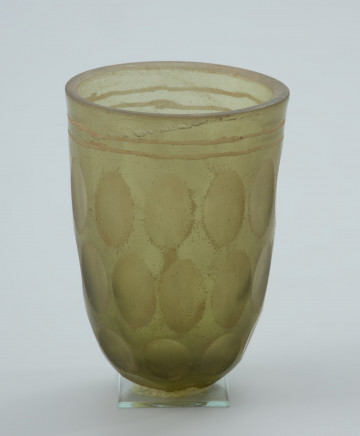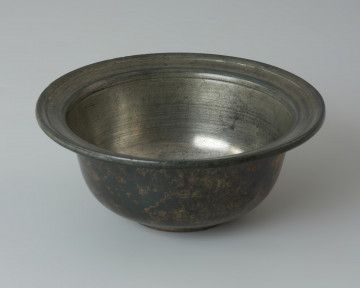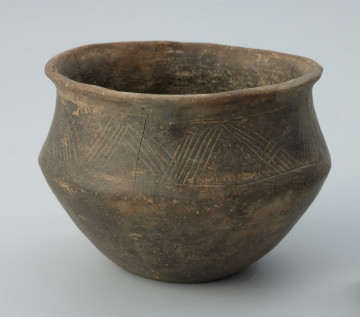
Decorated goblet
National Museum in Szczecin
Part of the collection: Antiquity
The semi-circular glass bead is decorated with images of female heads. The entire surface is covered with four rows of distorted quadrangular fields on an azure background. Every other field is filled with the design of small yellow, dark brown, white and blue squares. The female faces in Egyptian style are placed around the bead in every other field. The bead can be dated to the late Roman period and early Migration Period, between 3rd century and 1st half of the 5th century, and it can be associated with the Dębczyno group. Analogous beads have been discovered in the Baltic and the North Sea areas, but they were probably produced in the Black Sea glass-making centres. In the Pomeranian region, the beads decorated with images of women’s faces have been found in cemeteries of the Wielbark culture in Lubowidz, Czarnków and Wilków. They have various chronologies; some are older than the specimen from Włościbórz. The presented bead comes from the furnishings of an inhumation grave discovered in the 2nd half of the 19th century. This grave also contained a bronze fibula and a necklace of glass and amber beads. Both in the Wielbark culture and in the slightly younger Dębczyno group, necklaces were a regular element of women’s graves goods. As demonstrated by the example of the grave from Włościbórz, they were made of glass beads, most likely imported. No archaeological site has been found in Pomerania, which could be interpreted as a glass furnace dating to the Roman period or the Migration Period. However, amber beads were produced locally.
Bartłomiej Rogalski
Author / creator
Dimensions
cały obiekt: height: 2 cm, diameter: 2.4 cm
Object type
jewellery; bead
Technique
glazing
Material
glazing
Creation / finding place
Owner
Muzeum Narodowe w Szczecinie
Identification number
Location / status

National Museum in Szczecin

National Museum in Szczecin

National Museum in Szczecin
DISCOVER this TOPIC
National Museum in Lublin
DISCOVER this PATH
Educational path